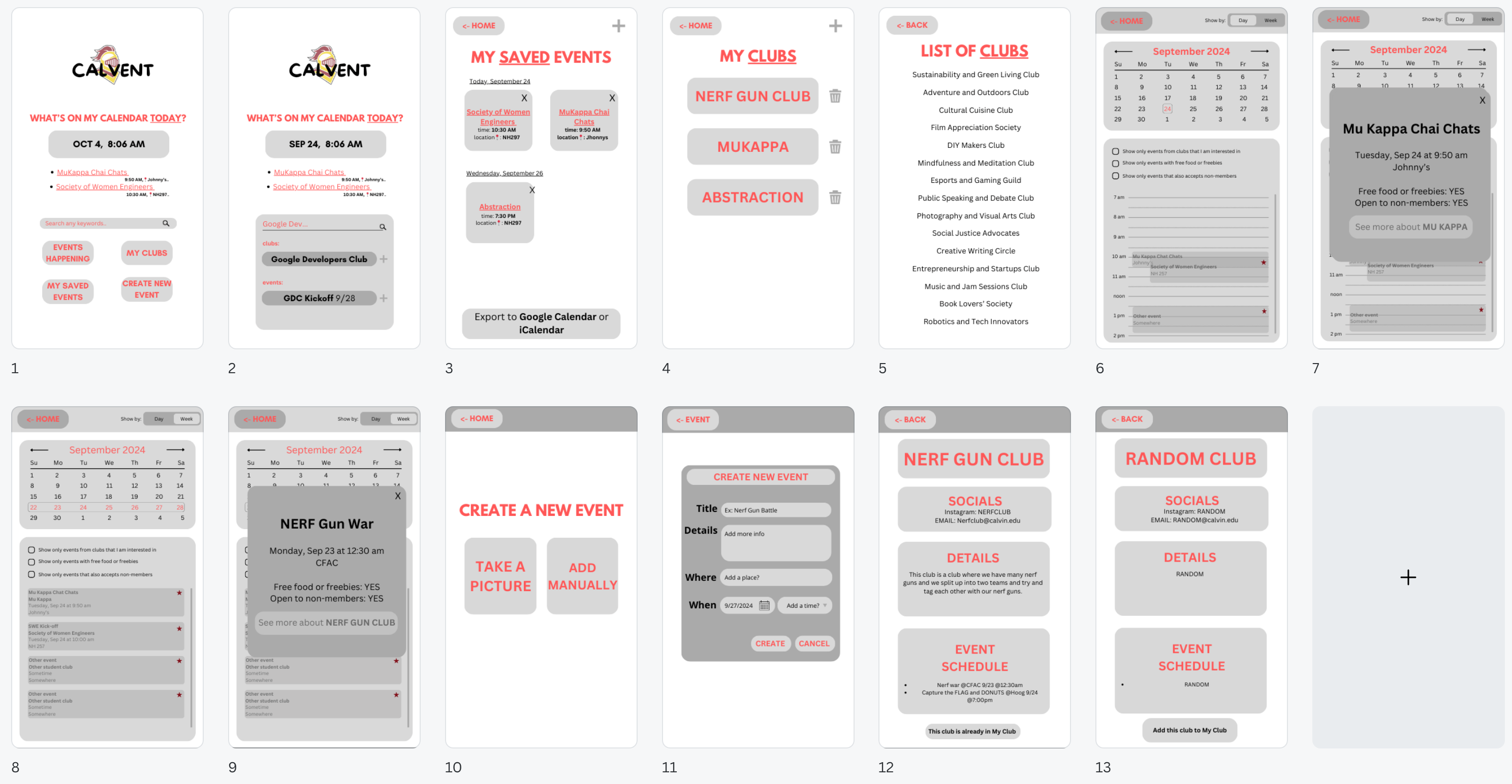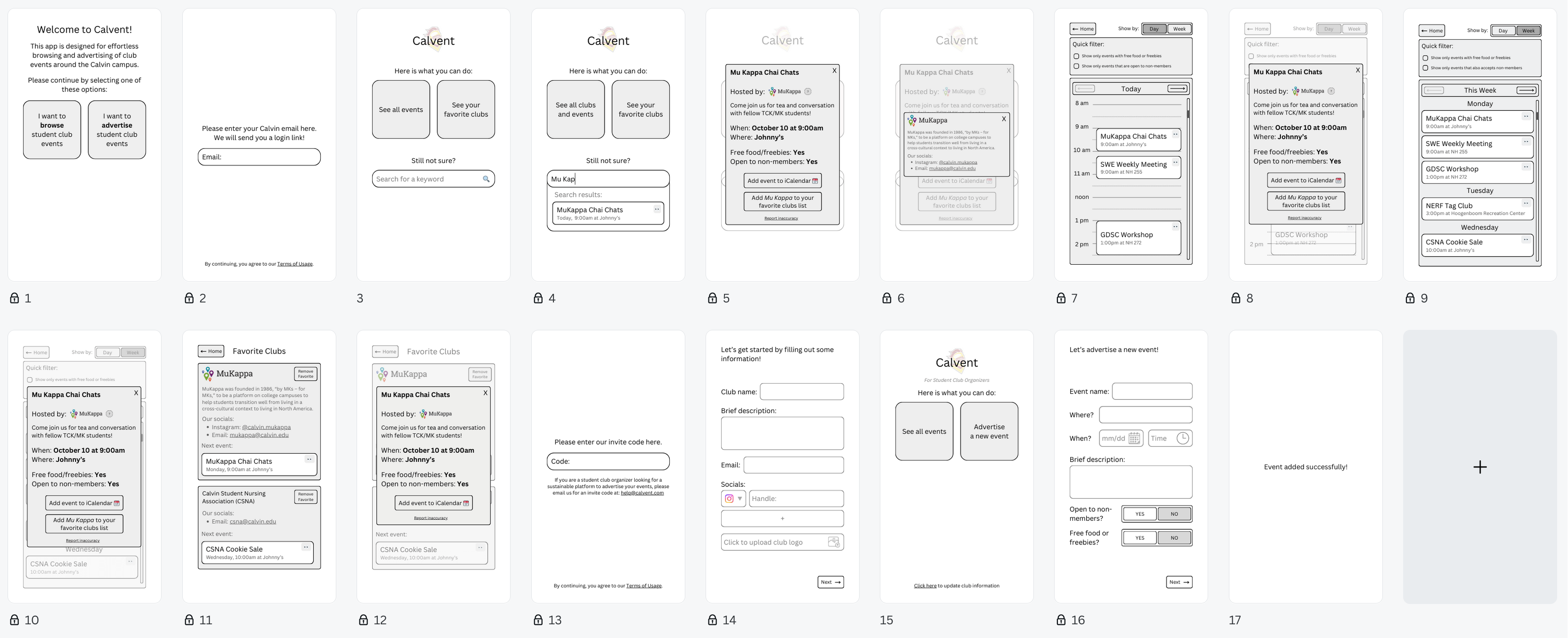Jiho Kim’s Portfolio
Interpretive
Calvent: Year-Long Cokes & Clubs
Authors: Jiho Kim, Jooha Yoo, Jaden L. Brookens
Published: October 15, 2024
At Calvin University, where I am currently finishing my senior year, we have an annual event called “Cokes & Clubs” where students and student club organizers meet to learn about new student clubs and recruit new members. However, this event only happens once a year, and through needfinding, we realized that many students want opportunities to discover and find new student clubs to participate in throughout the school year. Furthermore, club organizers wanted a platform where they could easily advertise and recruit new members to their clubs in a sustainable manner (e.g., without needing to print hundreds of flyers for their events or clubs).
So, in a collaborative effort (as an HCI class project), I led the design of a centralized platform for students and club leaders to manage and promote club events, enable event discovery, and increase participation and engagement across campus throughout the year.



We started by prototyping (in parallel) what the users might want (see Figure 4) and sketched a possible UI using Canva (see Figure 5), which we later simulated using Figma. We ran user studies to check our assumptions, through which we discovered many incorrect assumptions but also identified correct ones that we were able to reinforce in our final iteration (see Figure 6).
Although we did not actually implement our design as a functioning app, we demonstrated a walkthrough of our UI in the final class presentation (see Figure 7).
This class project has deepened my understanding of HCI beyond my previous research experience (i.e., “Towards Full Authorship with AI: Supporting Revision with AI-Generated Views”), particularly emphasizing the value of thorough needfinding through contextual inquiry and storyboarding. It has transformed my approach from researcher-centered to user-centered design, while teaching me to thoughtfully synthesize user feedback to uncover fundamental design challenges rather than simply implementing every suggestion.
Technical
Inspirative Text Prediction
Author: Jiho Kim
Published: December 12, 2023
This work (see Figure 8) is a technical blog post exploring an inspirative text prediction system aimed at augmenting human creativity in using predictive text by encouraging reflective and original thought. Unlike traditional predictive models that suggest the most probable next words, this system leverages linguistic constructs, such as subordinating conjunctions (e.g., “because”), to prompt deeper engagement with the text. Using datasets from Project Gutenberg, the project analyzed sentence structures and linguistic patterns with tools like spaCy and evaluated the latest Llama model (at the time of the publication). The findings highlighted subordinating conjunctions as effective prompts for provocative thinking. The blog post includes a scalable pipeline for data collection and processing, visualizations of linguistic features, and recommendations for extending the approach to diverse datasets and linguistic phenomena.